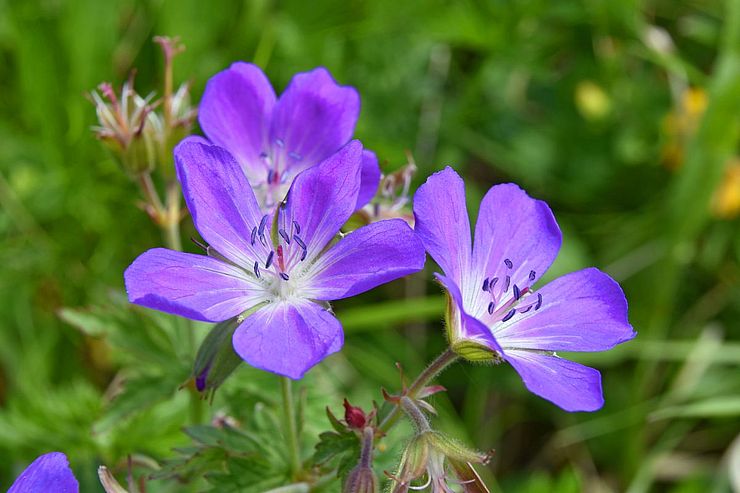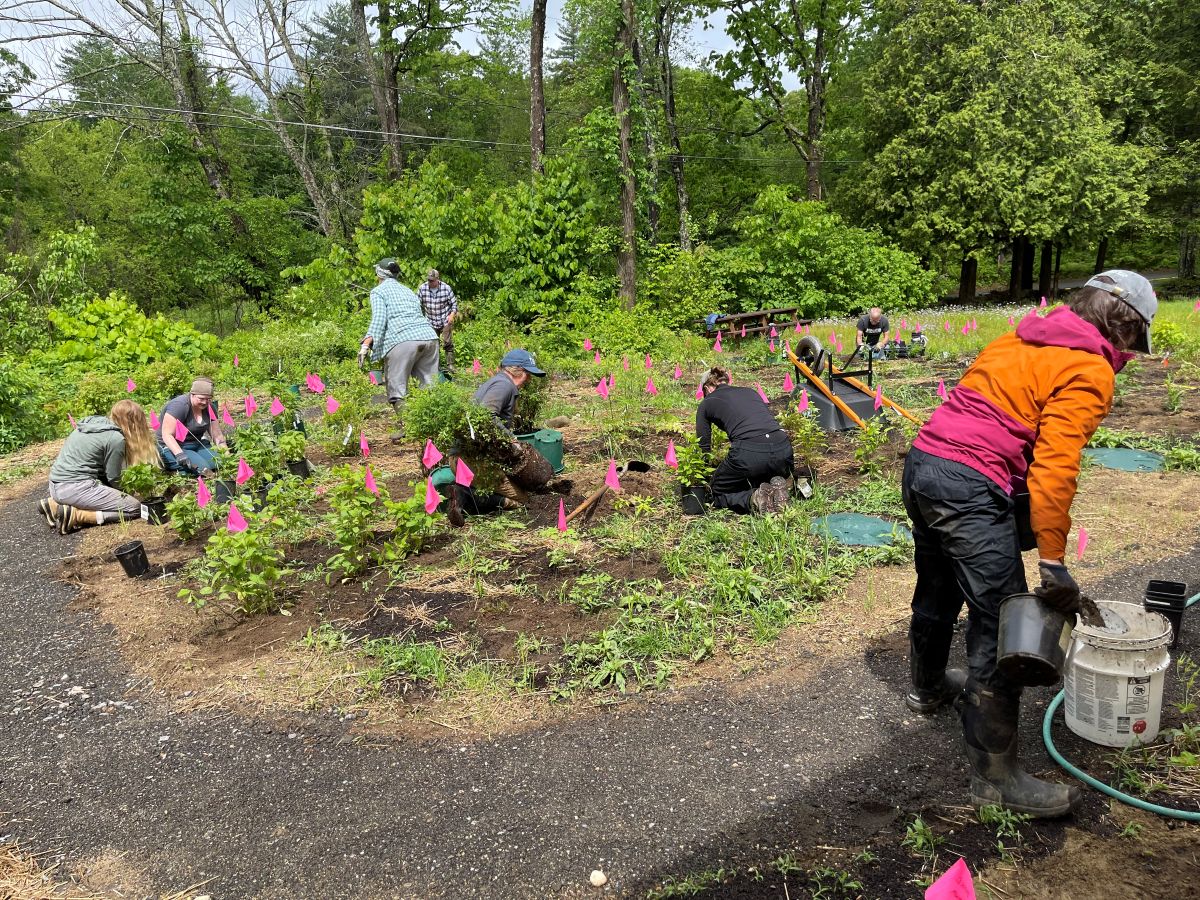Supporting Native Pollinators: A New Garden Takes Root at Skyfields

This summer, Mount Grace is embarking on a project to install a pollinator garden outside of our newly constructed conservation barn. The garden will host numerous native plant species that support local pollinators. Located at Skyfields Arboretum, the pollinator garden will provide additional habitat to complement previously completed pollinator work in the adjacent 7.5-acre meadow.
Across the globe, insect populations are on the decline. One major contribution to this phenomenon is the loss of habitat from human activity. Many insects are highly specialized and depend on specific native plants for parts of their life cycle. Non-native plants contribute to the loss in habitat for local pollinators. When creating a garden, it is important to select native plants that can support native pollinators.
Mount Grace’s pollinator garden will feature a variety of native shrubs and forbs that play a key role in the life cycle of native pollinators. The plants were chosen to include bloom times across the entire growing season. This will ensure that there is available nectar and pollen for as long as possible.

The garden will feature plants such as wild geranium, blue wood aster, and golden alexander. Each of these plants support specific local pollinators. Wild geranium (Geranium maculatum) is a larval host plant for the white-marked tussock moth (Orgyia leucostigma). Wild geranium also acts as a food source for a specialist mining bee, the cranesbill miner (Andrena distans).

Additionally, blue wood aster (Symphyotrichum cordifolium) is a host plant for the Pearl Crescent butterfly (Phycoides tharos). Meanwhile, Golden Alexander (Zizia aurea) hosts the Black Swallowtail butterfly (Papilio polyxenes).

On May 31, we invited community members to begin planting our garden and will continue planting throughout the summer. The garden will hopefully provide inspiration to local community members that are interested in adopting native plants in their own garden. For more information on creating your own pollinator garden, the Massachusetts Pollinator Network and the Pollinator Partnership are great resources. The Native Plant Trust also provides excellent information on native plants.
MA pollinator network: https://masspollinatornetwork.org/
Pollinator Partnership: https://www.pollinator.org/
The Native Plant Trust: https://www.nativeplanttrust.org/
Full Plant List:
Common Name | Scientific Name |
White wood aster | Eurybia divaricate |
Common mountain mint | Pycnanthemum virginianum |
Broad leaf mountain mint | Pycnanthemum muticum |
Narrow leaf mountain mint | Pycnanthemum tenuifolium |
Mountain laurel | Kalmia latifolia |
American spikenard | Aralia racemosa |
Golden Alexander | Zizia aurea |
Coastal Joe-Pye weed | Eutrochium dubium |
Spotted Joe-Pye weed | Eutrochium maculatum |
Spicebush | Lindera benzoin |
Flowering raspberry | Rubus odoratus |
Red elderberry | Sambucus racemosa |
Steeplebush | Spiraea tomentosa |
High bush blueberry | Vaccinium corymbosum |
White baneberry | Actaea pachypoda |
Butterfly milkweed | Asclepias tuberosa |
Blue cohosh | Caulophyllum thalictroides |
Showy tick trefoil | Desmodium canadense |
Woodland sunflower | Helianthus divaricatus |
Wild senna | Senna hebecarpa |
Tall meadow rue | Thalictrum pubescens |
New York ironweed | Vernonia noveboracensis |
Blue wood aster | Symphyotrichum cordifolium |
White snakeroot | Ageratina altissima |
Wild geranium | Gernaium maculatum |
Feathery false Solomon’s seal | Maianthemum racemosum |
Solidago flexicaulis | Solidago flexicaulis |
New Jersey tea | Ceanothus americanus |
Wild bergamot | Monarda fistulosa |
